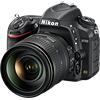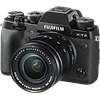Main
Model
Price
Advantages
launch
Announced
Body type
Camera subcategory
Sensor
Effective pixels
Max resolution
Sensor size
Sensor type
Processor
Image ratio w:h
Other resolutions
Sensor photo detectors
Image
ISO
Boosted ISO (minimum)
Boosted ISO (maximum)
White balance presets
Custom white balance
Image stabilization
Uncompressed format
JPEG quality levels
Photography features
Minimum shutter speed
Maximum shutter speed
Aperture priority
Shutter priority
Manual exposure mode
Subject / scene modes
Built-in flash
Flash range
External flash
Flash modes
Continuous drive
Self-timer
Metering modes
Exposure compensation
AE Bracketing
WB Bracketing
Maximum shutter speed (electronic)
Screen / viewfinder
Articulated LCD
Screen size
Screen dots
Touch screen
Screen type
Live view
Viewfinder type
Viewfinder coverage
Viewfinder magnification
Viewfinder resolution
Videography features
Resolutions
File Format
Microphone
Speaker
Optics & Focus
Autofocus
Digital zoom
Manual focus
Number of focus points
Lens mount
Focal length multiplier
Physical
Weight (inc. batteries)
Dimensions
Environmentally sealed
Battery
Battery details
Battery Life (CIPA)
Storage
Storage types
Connectivity
USB
HDMI
Microphone port
Headphone port
Wireless
Remote control
Wireless notes
Other features
Orientation sensor
GPS
GPS notes
Timelapse recording
Samples
Videos
Summary
The Nikon D750 highest resolution of 6016 x 4016 pixels (24 megapixels) is better in comparison with the X-T2 highest resolution of 6000 x 4000 pixels (24 megapixels). The Nikon D750 has larger sensor compared to the X-T2: Full frame (35.9 x 24 mm) versus APS-C (23.6 x 15.6 mm). This is the most important advantage of this model because big sensor allows the photographer to shoot photos of the more professional quality. The Nikon D750 offers a wider ISO range of 100-12800 than 200-12800 ISO range of the X-T2. Such ISO numbers let you to shoot better photos in low light conditions. The Nikon D750 offers more number of white balance presets - 12. This option gives the photographer more control over colour. The X-T2 offers more focus points than the Nikon D750: 325 vs 51. More number of focus points means more convenience while attempting to focus on objects which are not centred.
The Nikon D750 screen is better as it has more screen dots 1,229,000 in compare to 1,040,000 dots of the X-T2 screen. The higher dot count screen is better for reviewing pictures on your camera.
The Nikon D750 is equipped with built-in flash. The Nikon D750 battery life is better in compare to the X-T2 battery life. According to CIPA standards the camera owner will be able to produce 1230 photos with the D750 and only 340 with the X-T2. The Fujifilm X-T2 weighs 507g that is 243g lighter in comparison with the weight of the D750. The D750 can utilize optional accessory GPS devices. Recording GPS data can be useful if the camera owner is a traveller, to be able to check the image metadata and see exactly where a photo was captured.
The Nikon D750 has 12 advantages and the X-T2 only 4 so the D750 will become the best buy. Check the lowest price on Amazon.


